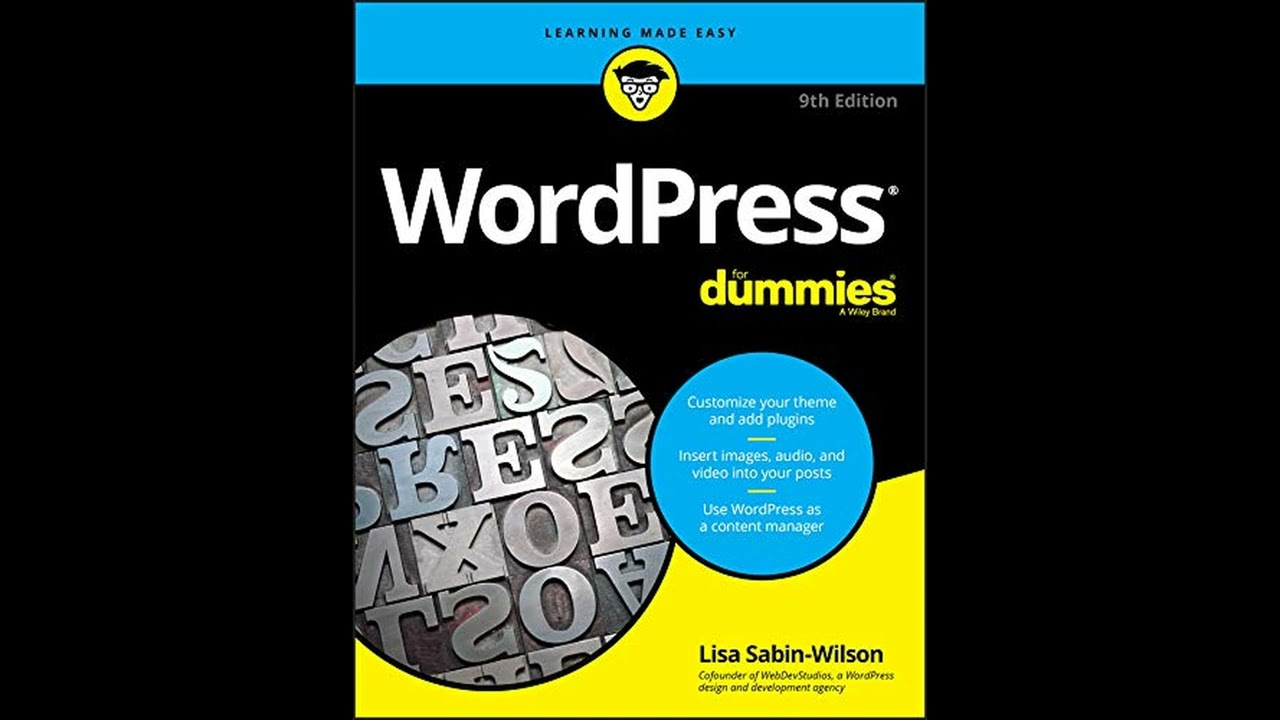Blog
WordPress For Dummies (For Dummies (Computer/Tech))

Understanding WordPress: A Comprehensive Guide
WordPress has become a staple for anyone looking to establish an online presence, whether for personal blogging, business websites, or e-commerce platforms. This guide will delve into the essentials of WordPress, making it easier for beginners to navigate this powerful content management system (CMS).
What is WordPress?
WordPress is an open-source platform that enables users to create and manage websites seamlessly. Launched in 2003, it has evolved into one of the most popular website builders worldwide, powering over 40% of the internet. Its flexibility allows users to create anything from simple blogs to complex websites with advanced functionalities.
Why Choose WordPress?
1. User-Friendly Interface
One of WordPress’s standout features is its intuitive interface. Even those with minimal technical skills can quickly learn to manage content, create pages, and customize layouts. The dashboard is straightforward, featuring an easy navigation menu that guides users through various functionalities.
2. Customization Options
With thousands of themes and plugins available, WordPress allows users to tailor their websites to their unique preferences. Themes determine the overall design and layout, while plugins add specific functionalities, ranging from SEO optimization to social media integration.
3. Strong Community Support
The WordPress community is vast and welcoming. Users can find forums, blogs, and online resources to assist them in troubleshooting issues, learning new skills, and staying updated with the latest developments in WordPress.
Getting Started with WordPress
Step 1: Selecting a Hosting Provider
Before diving into WordPress, choosing a reliable hosting provider is essential. Numerous hosting services support WordPress, including Bluehost, SiteGround, and WP Engine. Factors to consider when selecting a host include uptime, customer support, and scalability options.
Step 2: Installing WordPress
After securing hosting, you can install WordPress. Many hosting providers offer one-click installations that simplify this process. Once installed, you can access your WordPress dashboard through a web browser.
Step 3: Choosing a Theme
The next step is selecting a theme. The WordPress repository boasts thousands of free and paid themes. When choosing a theme, consider both aesthetics and functionality. Opt for a responsive theme that works well on mobile devices and has customization options.
Crafting Your Website
1. Creating Content
Once your theme is in place, it’s time to start creating content. WordPress uses a WYSIWYG (What You See Is What You Get) editor, making it easy to format text, insert images, and create links. You can categorize posts, add tags, and schedule publications for better content management.
2. Adding Plugins
Plugins can significantly enhance your website’s functionality. Some essential plugins include:
- Yoast SEO: Helps optimize your site for search engines.
- WooCommerce: Turns your site into a fully functioning e-commerce platform.
- Contact Form 7: Allows you to create custom contact forms.
3. Optimizing for SEO
Search Engine Optimization (SEO) is crucial for increasing your website’s visibility. Here are a few fundamental practices to follow:
- Use relevant keywords naturally throughout your content.
- Write compelling meta descriptions and titles.
- Optimize images with appropriate alt text and file names.
Managing Your WordPress Site
Regular Updates
WordPress regularly releases updates that include security patches, bug fixes, and new features. Keeping your WordPress version, themes, and plugins updated ensures that your site remains secure and functional.
Backing Up Your Site
Regular backups are essential for protecting your content. Several plugins can automate this process, ensuring that you can restore your website in case of a failure. Popular backup solutions include UpdraftPlus and BackupBuddy.
Troubleshooting Common Issues
Despite its user-friendly nature, beginners may encounter issues. Here are a few common problems and their solutions:
1. White Screen of Death
This issue usually arises from a plugin conflict or theme issue. Disabling plugins one by one can help identify the culprit.
2. Error Establishing a Database Connection
This error occurs due to incorrect database credentials. Check your wp-config.php file to ensure the database name, username, and password are correct.
3. Slow Website Speed
A slow-loading site can frustrate visitors. To optimize speed, consider:
- Using a caching plugin like WP Super Cache.
- Compressing images.
- Minimizing the use of heavy themes and plugins.
Best Practices for Security
1. Use Strong Passwords
Ensure all user accounts have robust passwords. Consider using a password manager to generate and store complex passwords.
2. Limit Login Attempts
Limiting login attempts can prevent brute force attacks. Various plugins are available to enforce this security measure.
3. Implement SSL Certificates
Secure Socket Layer (SSL) certificates encrypt data exchanged between the server and user. Most hosting providers offer free SSL certificates, which can improve trust and SEO rankings.
Engaging Your Audience
1. Utilize Social Media
Although this post excludes links to social media platforms, actively engaging on social media can drive traffic to your site. Share new posts, interact with followers, and participate in relevant discussions.
2. Encourage Comments
Allowing comments on your posts fosters interaction and builds community. Respond to comments promptly to encourage more discussion and show appreciation for your readers.
3. Email Marketing
Building an email list enables direct communication with your audience. Consider using tools like Mailchimp or ConvertKit to manage your email campaigns and newsletters.
Conclusion
WordPress is a powerful and versatile platform that empowers users to create stunning websites without extensive technical knowledge. Whether you are setting up a simple blog or a robust online store, understanding the fundamentals will set you on the path to success. By leveraging its features, engaging your audience, and following best practices, you can craft a website that fulfills your goals and resonates with your visitors. Start your WordPress journey today, and watch your online presence grow!

